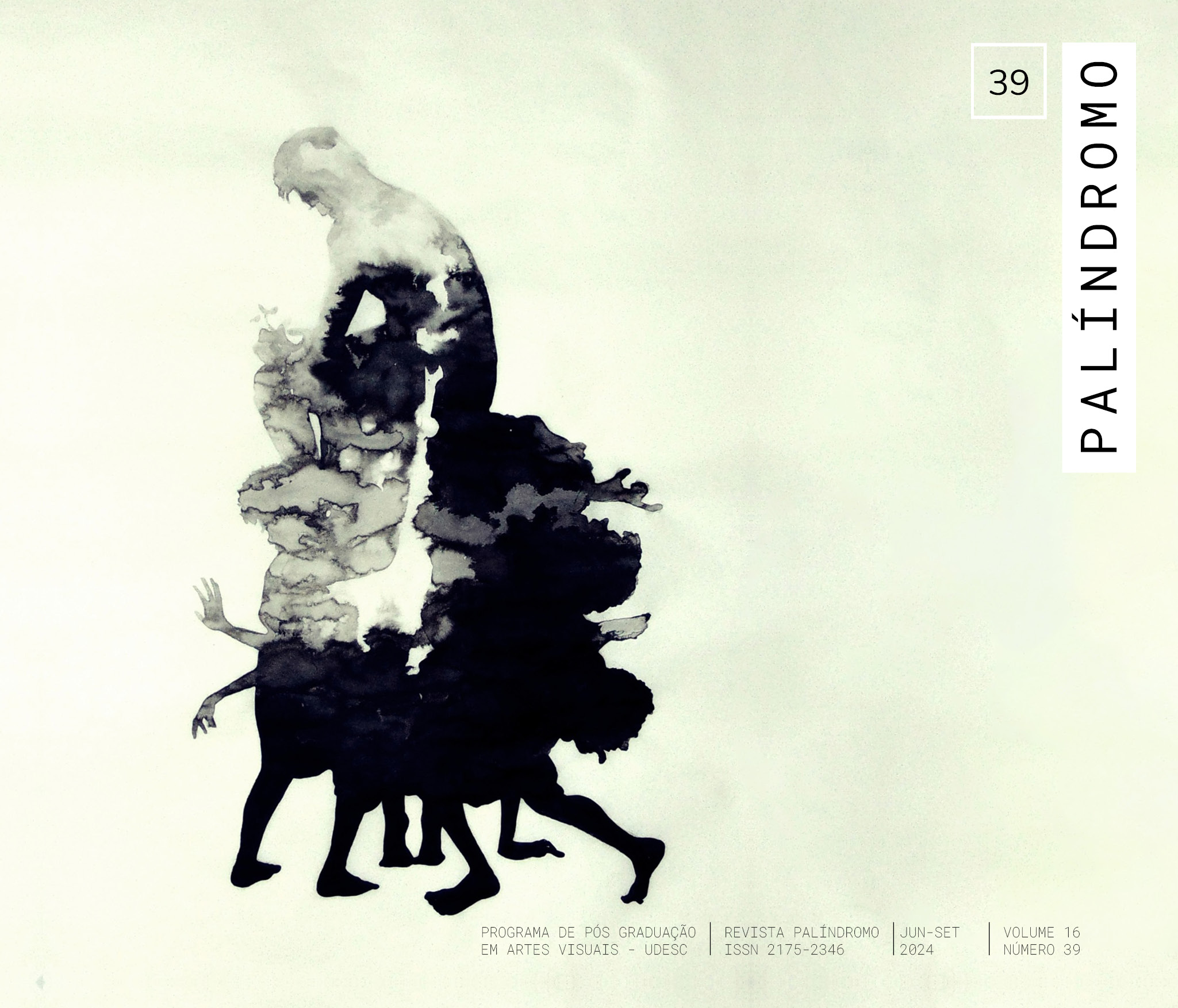Fogo, destruição e criação: a arte de Anselm Kiefer e a filosofia de Andrea Emo
DOI:
https://doi.org/10.5965/2175234616392024e0010Palabras clave:
Anselm Kiefer, Andrea Emo, Iconoclastia, arte e naturezaResumen
A partir de uma questão ambiental sobre o problema das queimadas no Brasil, trata-se, neste artigo, da correlação entre destruição e regeneração na natureza e na arte. Levando em conta tragédias causadas pelo fogo que, ao longo da história, arruinaram o patrimônio histórico e artístico, serão analisadas as afinidades existentes entre um artista e um filósofo. De um lado coloca-se Anselm Kiefer, com destaque para as pinturas produzidas para uma exposição no Palazzo Ducale de Veneza, local acometido por um grande incêndio em 1577; de outro, o pensamento de Andrea Emo, autor recentemente redescoberto. Como será demonstrado, a noção de que as imagens nascem de gestos iconoclastas apresenta-se aqui como parte central de um programa em que destruição e criação se fundem e se manifestam por toda parte.
Descargas
Citas
BALZAC, Honoré de. Le chef d’œuvre inconnu. In: Œuvres illustrées de Balzac. Paris: MM. Marescq / J. Bry Ainé, 1851.
BELLI, Gabriella; SIRÉN, Janne (a cura di). Anselm Kiefer. Palazzo Ducale Venezia. Questi scritti, quando verranno bruciati, daranno finalmente un po’ di luce (Andrea Emo). Venezia: Marsilio, 2022.
BRANDI, Cesare. Teoria da restauração. São Paulo: Ateliê Editorial, 2004.
DVOŘÁK, Max. Catecismo da preservação de monumentos. São Paulo: Ateliê Editorial, 2008.
EMO, Andrea. Aforismi per vivere. Tutte le parole non dette si ricordano di noi. Milano-Udine: Mimesis, 2007.
EMO, Andrea. Il dio negativo. Scritti teoretici (1925-1981). Venezia: Marsilio, 1989.
EMO, Andrea. In principio era l’immagine. Firenze / Milano: Giunti / Bompiani, 2019. E-book.
EMO, Andrea. Supremazia e maledizione. Diario filosofico 1973. Milano: Raffaello Cortina, 1998.
GAMBONI, Dario. The destruction of art. Iconoclasm and vandalism since the French Revolution. London: Reaktion Books, 2018.
KIEFER, Anselm. L’arte sopravvivrà alle sue rovine. Milano: Feltrinelli, 2018. E-book.
KIEFER, Anselm. L’art survivra à ses ruines. Nouvelle édition [en ligne]. Paris: Collège de France, 2011. Disponível em http://books.openedition.org/cdf/386, acesso em 29 jan. 2024.
LEONEL, Mauro. O uso do fogo: o manejo indígena e a piromania da monocultura. Estudos Avançados, v. 14, n. 40, p. 231-250, 2000.
LOBATO, Monteiro. Urupês. São Paulo: Globo, 2007.
MEGGERS, Betty J. Amazônia: a ilusão de um paraíso. Belo Horizonte / São Paulo: Itatiaia / Edusp, 1987.
RAGAZZI, Alexandre. O limite da pintura ou onde estão os tempos sombrios. In: Anais do 41º Colóquio do Comitê Brasileiro de História da Arte: Arte em tempos sombrios. São Paulo: CBHA, 2022, p. 397-406.
RIBEIRO, Berta G. Os índios das águas pretas: modo de produção e equipamento produtivo. São Paulo: Companhia das Letras / Edusp, 1995.
RIDOLFI, Carlo. Delle maraviglie dell’arte, overo delle vite degl’illustri pittori Veneti e dello Stato. 2v. Venetia: Gio. Battista Sgava, 1648.
RIEGL, Alois. O culto moderno dos monumentos. A sua essência e a sua origem. São Paulo: Perspectiva, 2014.
SELLARS, John. Stoicism. Berkeley / Los Angeles: University of California Press, 2006.
VIOLLET-LE-DUC, Eugène. Dictionnaire raisonné de l’architecture française du XIe au XVIe siècle. T. VIII. Paris: Morel, 1866.
Descargas
Publicado
Cómo citar
Número
Sección
Licencia
Derechos de autor 2024 Alexandre Ragazzi

Esta obra está bajo una licencia internacional Creative Commons Atribución 4.0.
DECLARAÇÃO DE DIREITOS AUTORAIS
a. Os artigos publicados pela revista são de uso gratuito, destinados a aplicações acadêmicas e não comerciais. Todos os direitos autorais são atribuídos à revista. Os artigos cujos autores são identificados representam a expressão do ponto de vista de seus autores e não a posição oficial da Revista Palíndromo. O (s) autor (es) compromete-se sempre que publicar material referente ao artigo publicado no Palíndromo mencionar esta publicação da seguinte forma:
Este artigo foi publicado originalmente pela revista Palíndromo em seu volume (coloque o volume), número (coloque o número) no ano de (coloque o ano) e pode ser acessado em: http://www.revistas.udesc.br/index.php/palindromo
b. Plágio, em todas as suas formas, constitui um comportamento antiético de publicação e é inaceitável. A revista Palíndromo utiliza o software iThenticate de controle de similaridade


